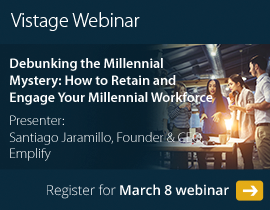Reaping the biggest benefits of your multigenerational workforce

Millennials and Generation Z: Go ahead and skip over the next paragraph. You probably don’t want to hear it. For the rest of you … see what you think of this quote from Newsweek:
“We have a generation (or at least part of a generation) whose every need has been catered to since birth. Now, when they finally face adulthood, they expect the gift-giving to continue. I’m fed up with the ceaseless carping of a handful of spoiled, self-indulgent, overgrown adolescents … start working and, for heaven’s sake, stop whining.”
Eesh. Harsh, but be honest for a moment: Can you relate? Have you ever found yourself questioning the way your younger peers approach work?
Well, guess what? So have your seniors.
The above excerpt wasn’t published last month, last year, or even in the last decade. It isn’t referring to Millennials or Generation Z.
I extracted it from this editorial penned in 1993.
You know, right around the time Gen Xers were beginning to enter the workforce.
Turns out, generational differences have been documented since the 1800s
It’s somewhat sad to think that not much has changed in this area. In one survey from Society for Human Resource Management, roughly one in four HR professionals reported substantial levels of intergenerational conflict within their organizations. Managers complained about younger workers’ poor work ethic; younger employees complained that managers were resistant to change and prone to micromanaging.
Much of the current advice does little to help, and may even hurt, those generational divides. You don’t have to look far to come across headlines like these:
- Can Baby Boomers Succeed in a Millennial World?
- Why Millennials Aren’t Happy That Gen Z is Entering the Workforce
- What To Do About Millennial Workers
(Ah, yes. What indeed.)
The various observations all point to one conclusive reality
Like it or not, generationally driven discrepancies in how your people perceive one another — or interact within your work culture — are likely to exist in some form.
But in the midst of this chaos are a few bright spots. For example, consider these commonly discussed traits of your most experienced employees:
- The Silent Generation, born between 1928 and 1945, is often described as:
- Civic-minded
- Very loyal
- Good team players
- Full of knowledge and life experience
- Defined by a strong work ethic
- Baby Boomers, born between 1946 and 1964, are said to be defined by:
- Purpose
- Long job tenures
- Commitment to getting the job done
- High expectations
- A tendency to push hard to reach goals
As a disclaimer: The above lists are unscientific and based purely on a recent binge of scoured stats, studies, and statements published by sources ranging from Inc. to Forbes. Such generalities should always be taken with a grain of salt — especially when you’re talking about buckets as big as the ones used to group together people who were born over the course of nearly two decades. It’s far more important to pay attention to individuals and measure what’s unique about the makeup of your specific workforce.
Still, gaining a greater understanding of how our varied experience levels may influence engagement at work is important..
With five generations working side-by-side, it’s time to finally cut through the stereotypes and seek out ways to combine our strengths. To learn more about this topic and how to truly engage your Millennial workforce, register for our next Vistage webinar Debunking the Millennial Mystery.
Related articles
Category : Performance Management / HR
Tags: multigenerational workforce
